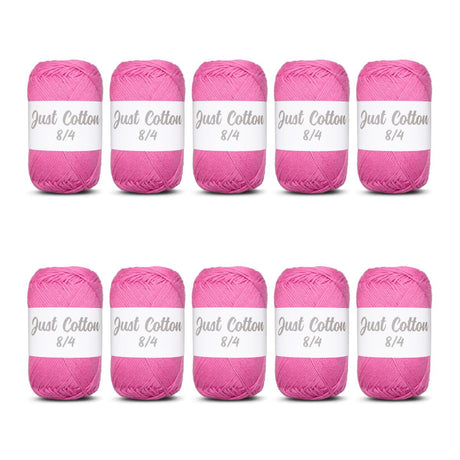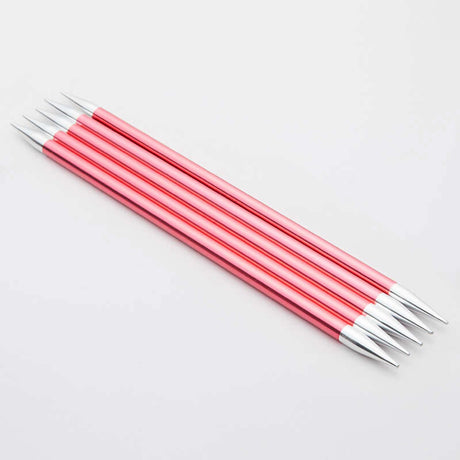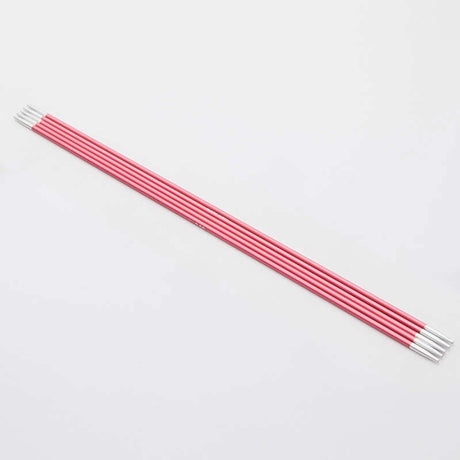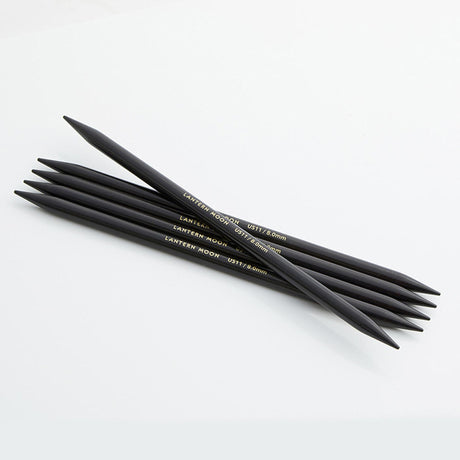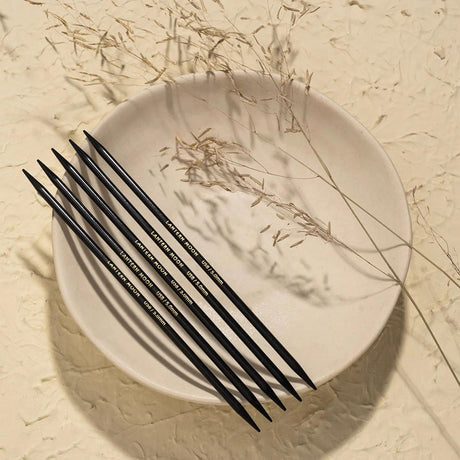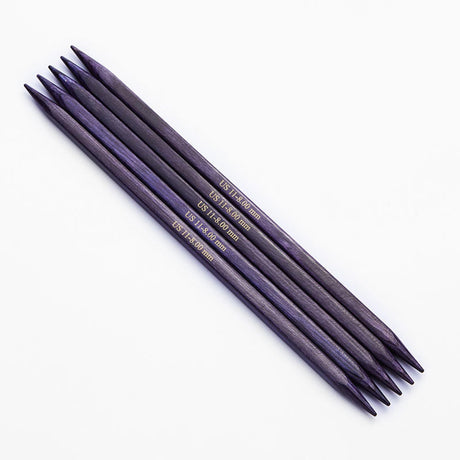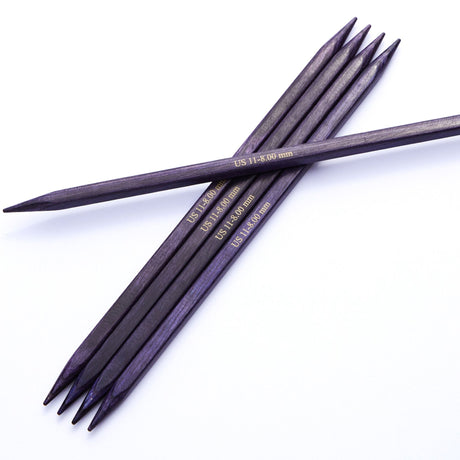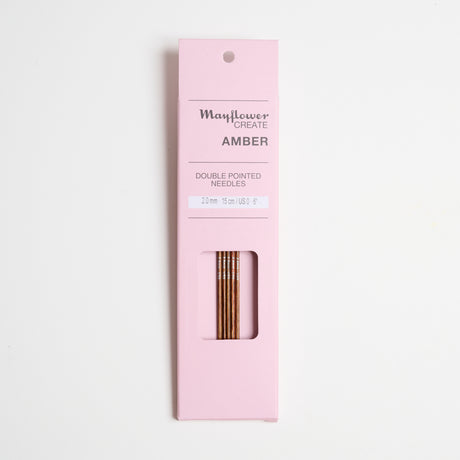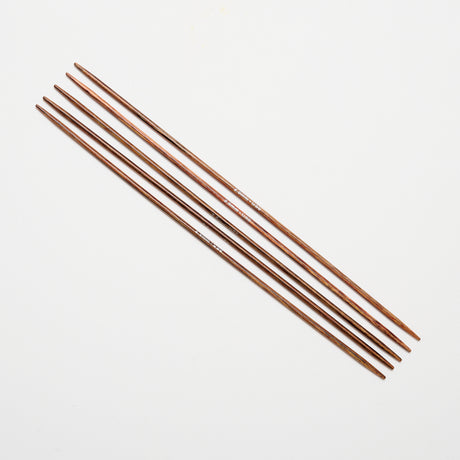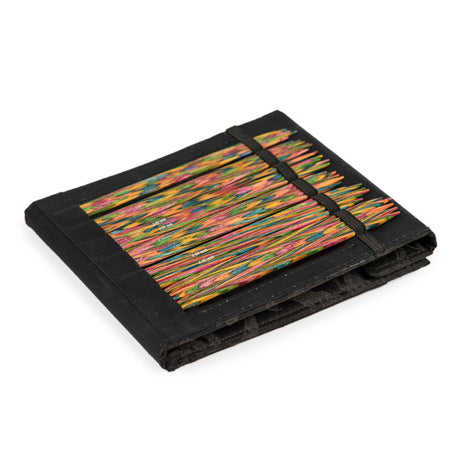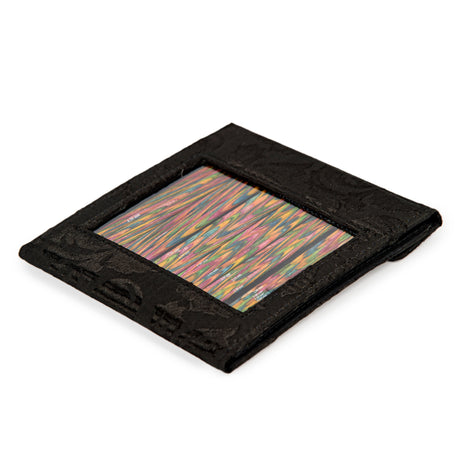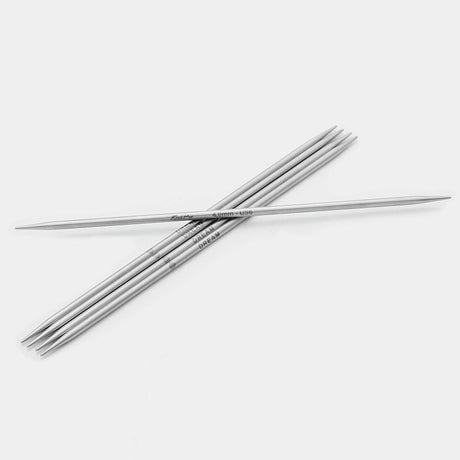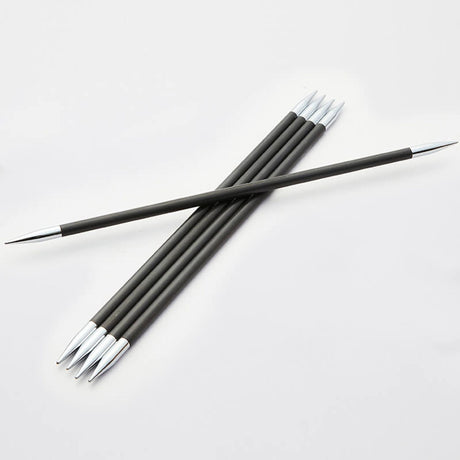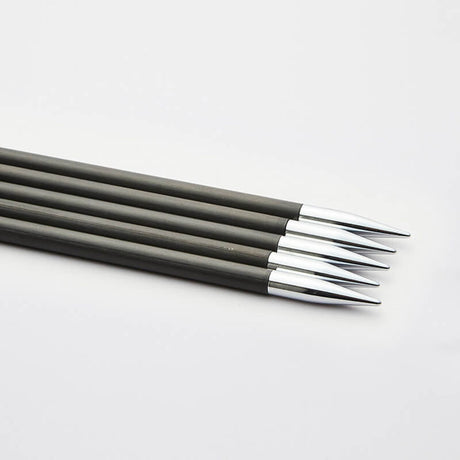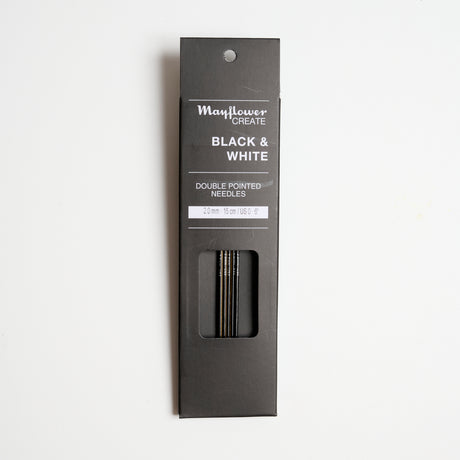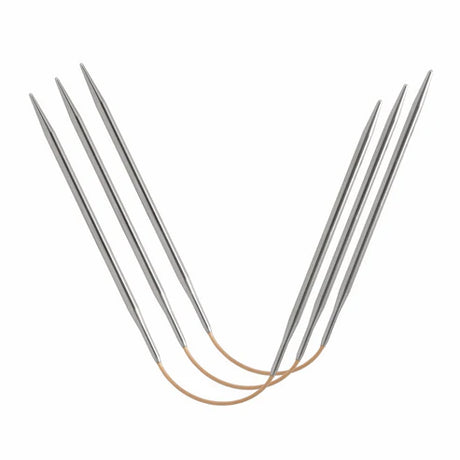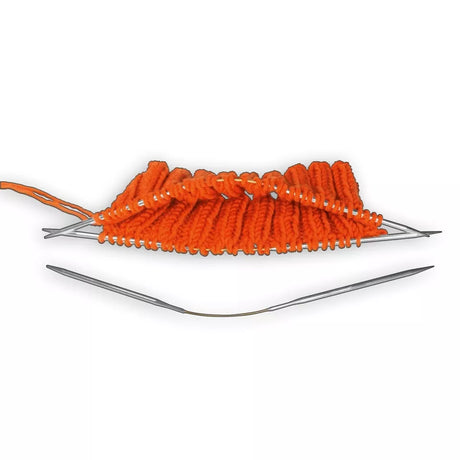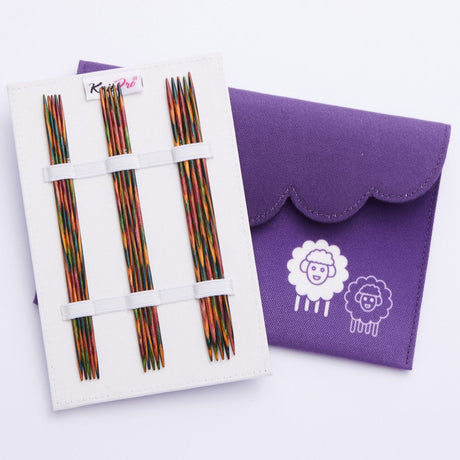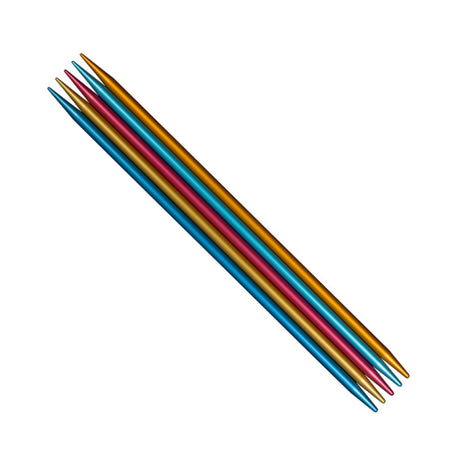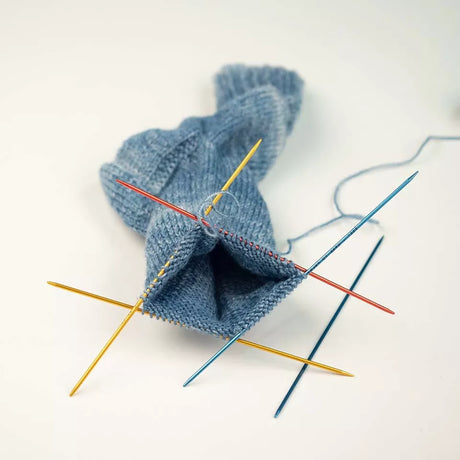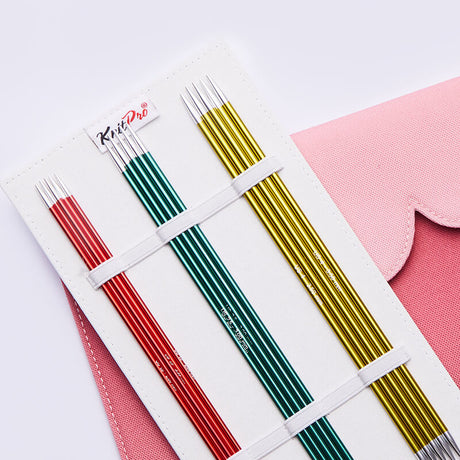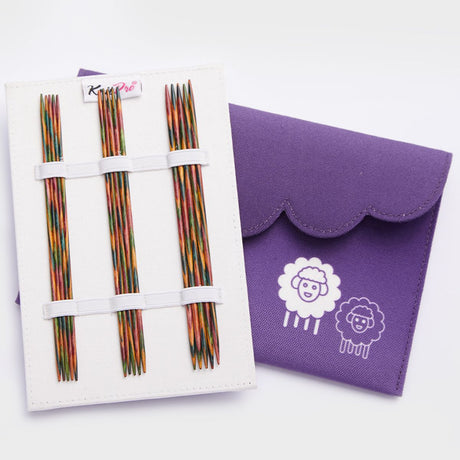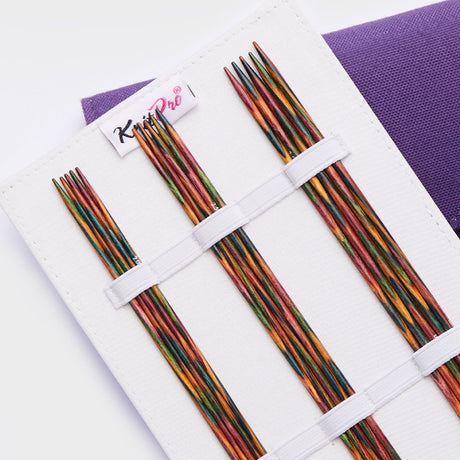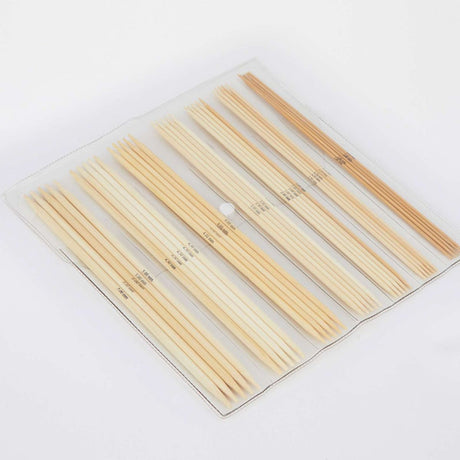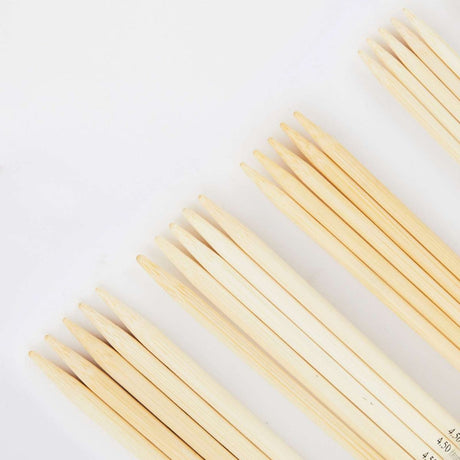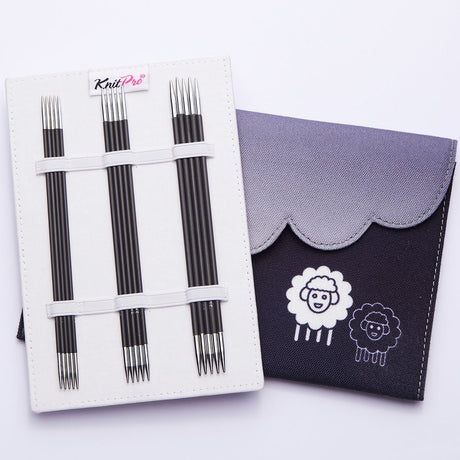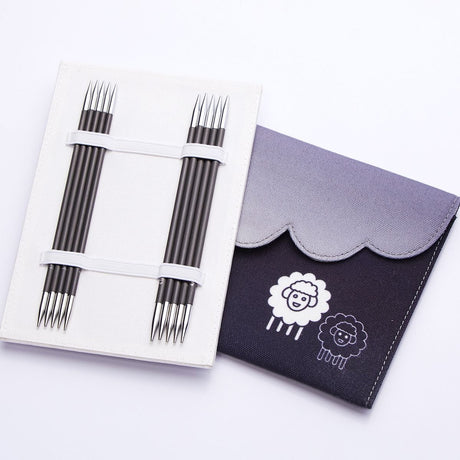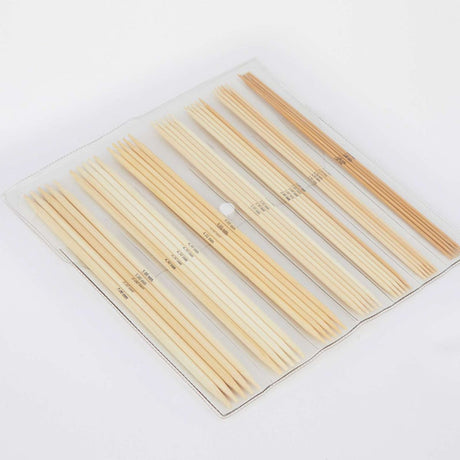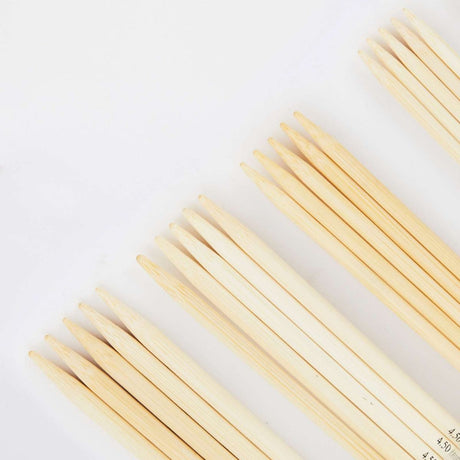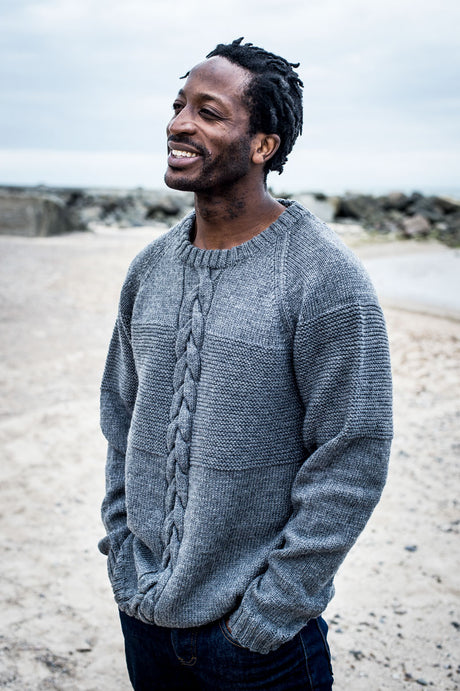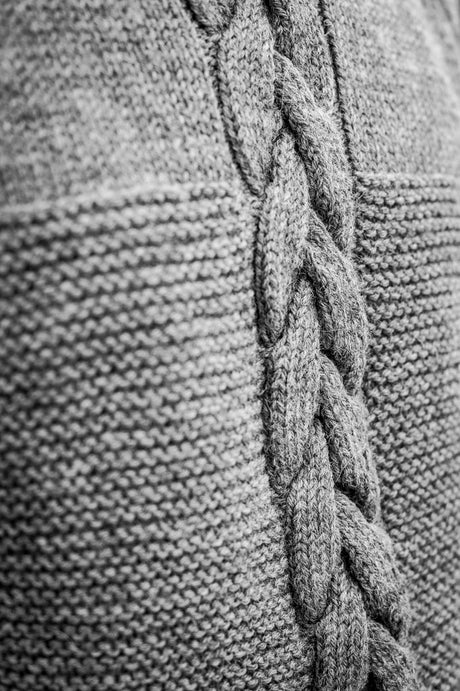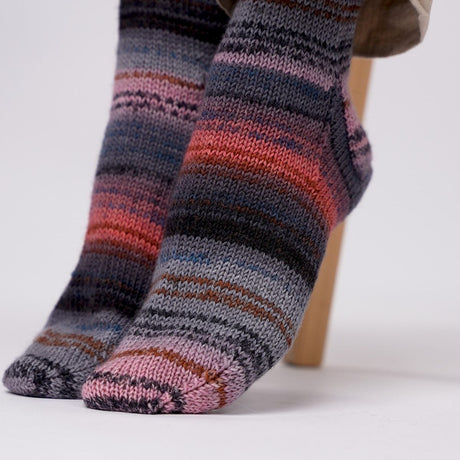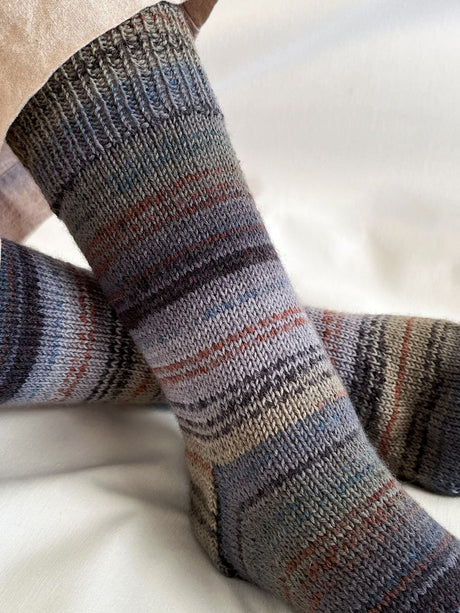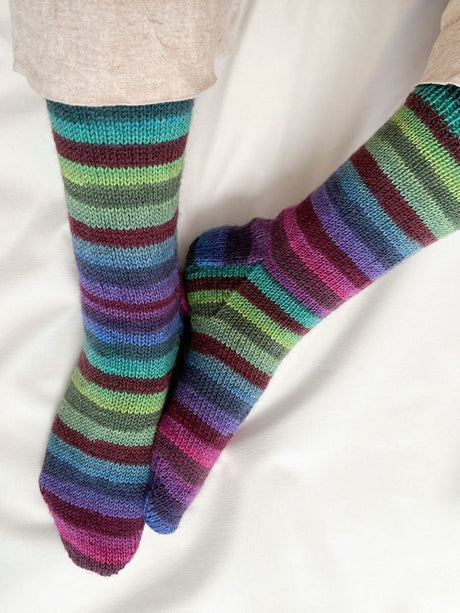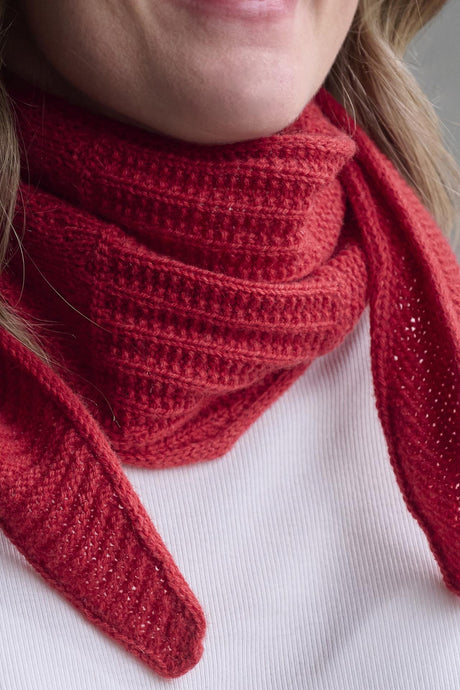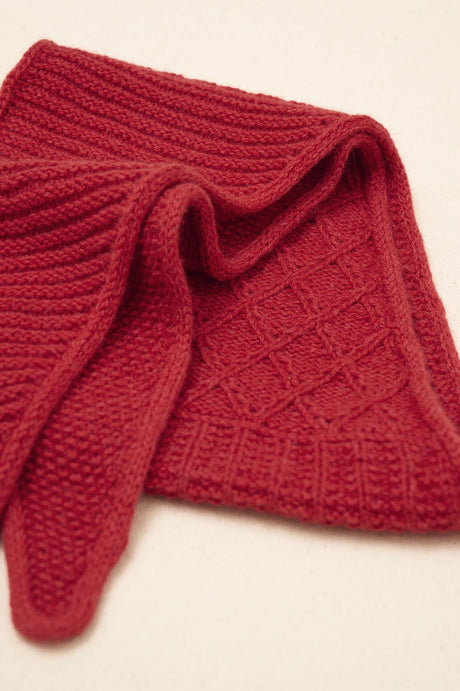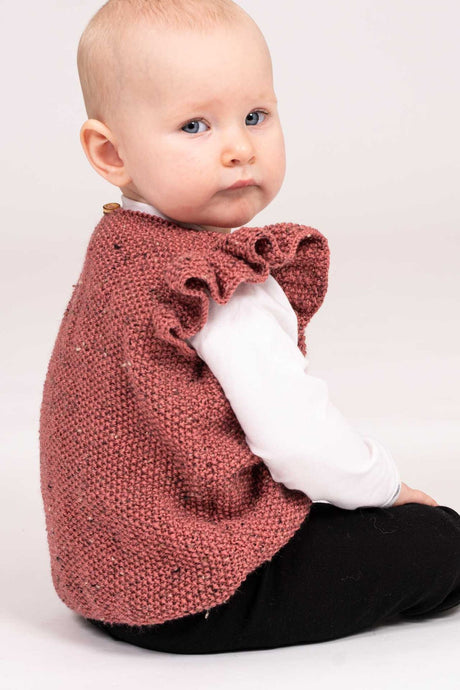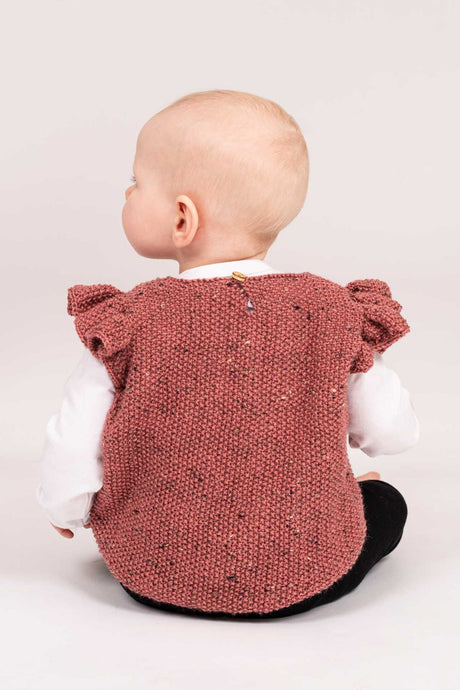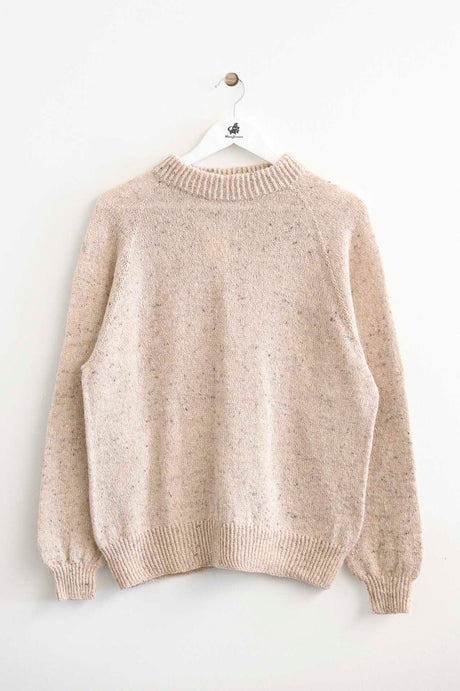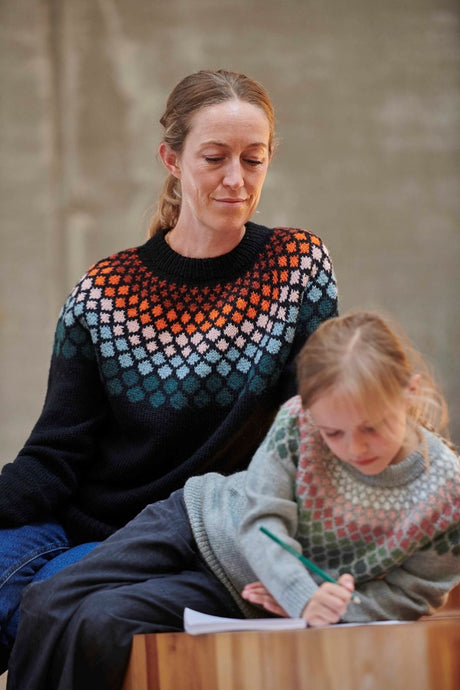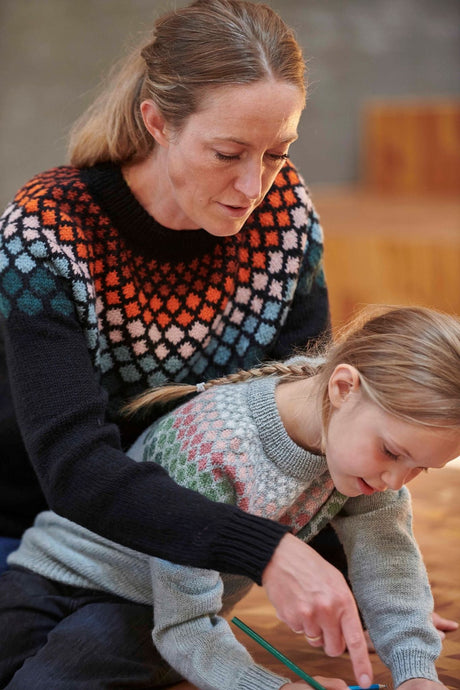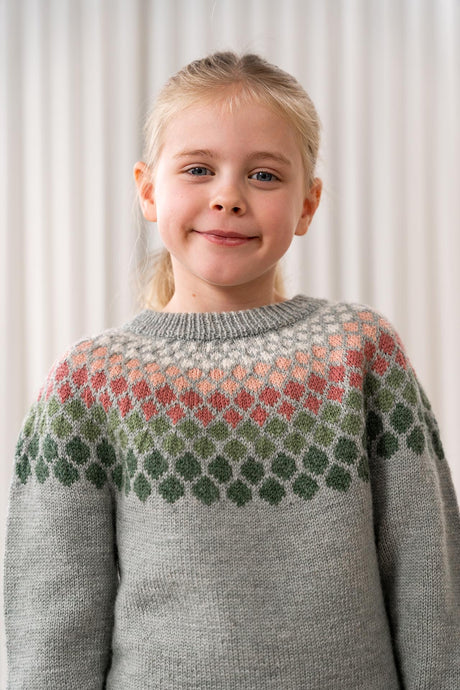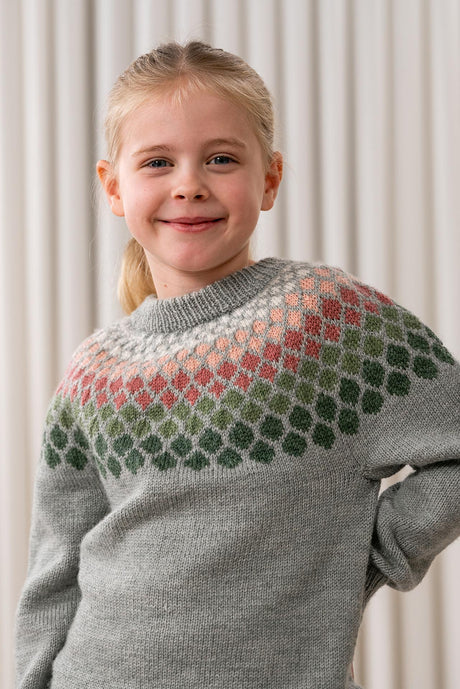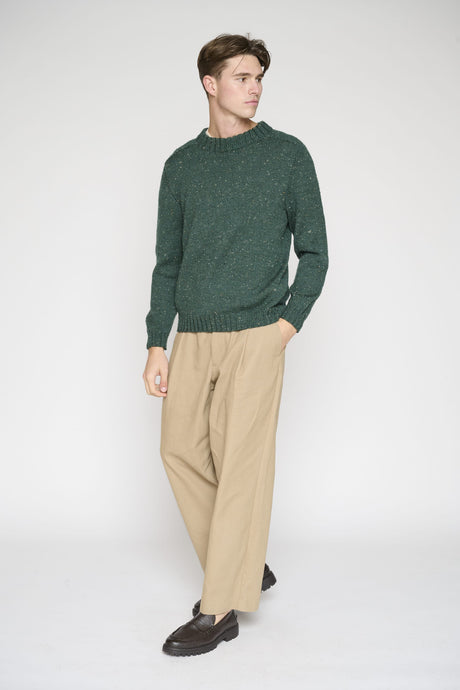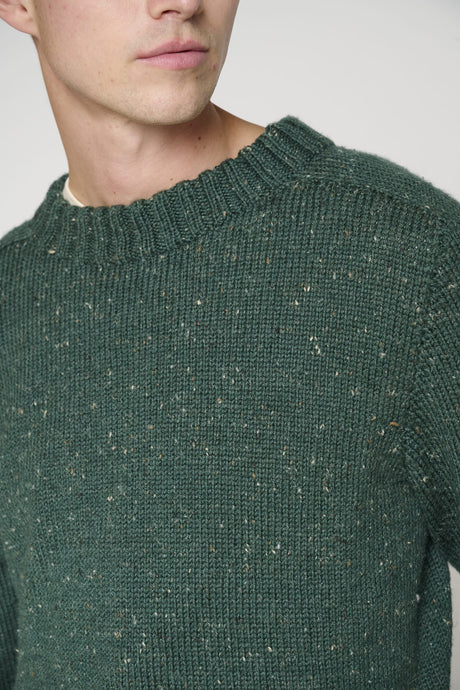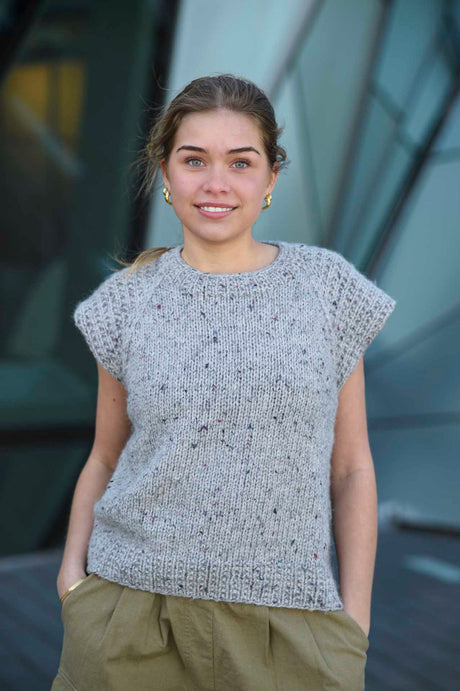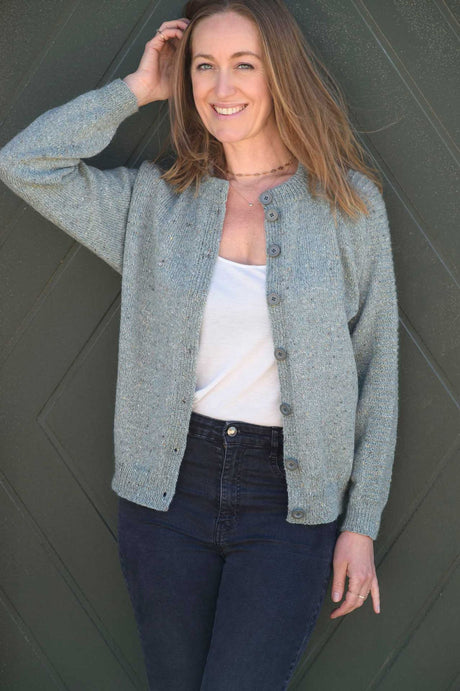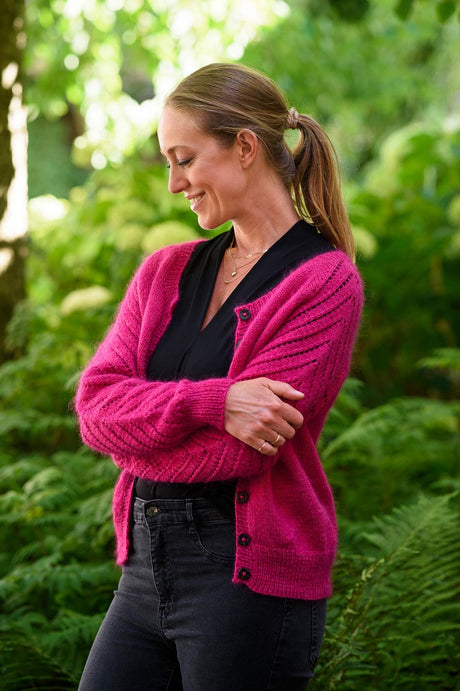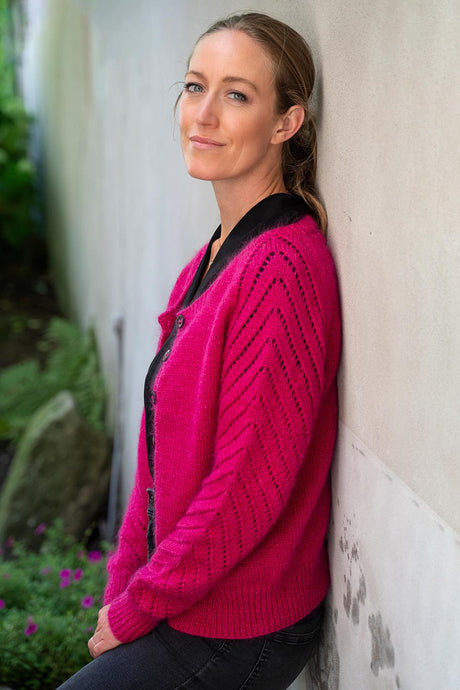Choosing double-pointed needles
There are many different types of double-pointed needles available, as well as various materials. If you're new to knitting, it can be somewhat overwhelming to determine which material suits you best. We'll therefore go through them below.
The most common material choices for double-pointed needles are wood or aluminum, but KnitPro also offers double-pointed needles in materials like carbon fiber.
Wood needles are a popular choice for double-pointed needles. Many find them soft and less harsh on the hands compared to metal needles. Double-pointed needles in birch or bamboo, for example, are a good choice for most knitters. However, wooden needles can pose challenges if you knit tightly. Thin wooden double-pointed needles can risk breaking if you knit very tightly. Additionally, stitches do not slide as easily on wooden needles as they do on metal ones, although wooden needles also have a smooth and polished surface.
If you knit tightly, aluminum double-pointed needles are a good choice because they can withstand greater pressure if you knit tightly or grip the needles tightly. Aluminum is a relatively lightweight material with a very smooth surface, making stitches slide extra easily.
However, please remember that these recommendations are only guidelines. No two knitters knit exactly alike, so feel free to experiment and find the double-pointed needles that work best for you. Often, the choice of knitting needles also depends on what you're used to using.
Different sizes of double-pointed needles
Once you've chosen the double-pointed needles you prefer, you'll also need to select the right needle size for your project.
If you're following a pattern, the needle size is typically specified in the pattern. However, it's important to pay attention to gauge and ensure that the recommended needle size gives you the correct gauge. Otherwise, you may need to choose a larger or smaller needle to ensure that your knitting style matches the pattern and gauge, and that, for example, socks reach the correct length.
The size of the needles is indicated in millimeters, with a size 3, for example, corresponding to a 3 mm needle. If you're using an English pattern, be aware that they use different size designations.
Double-pointed needles are also available in different lengths, and it's a good idea to consider this as well. Short needles are typically more comfortable to work with because you can sit with your hands and arms in a more relaxed position, as the needles don't take up much space. However, short needles aren't the best choice if your knitting project requires many stitches per needle, as you may risk dropping some stitches due to the needles being too short. In such cases, it's better to choose longer double-pointed needles.
When choosing the length of your double-pointed needles, it's a good idea to base it on your planned project. Calculate how many stitches you'll have per needle and use this number when selecting the length of your double-pointed needles.
Alternatives to double-pointed needles
It may take some practice to learn how to use double-pointed needles, and unfortunately, not everyone enjoys using this type of needle. Fortunately, there are alternatives to double-pointed needles.
Short circular needles are available, which are short enough to use for knitting sleeves on a sweater, for example. However, a disadvantage of very short circular needles can be that the cable feels too short, making it strenuous for the hands to knit with such a short circular needle. A very short circular needle is also not an option if you need to knit smaller items like children's socks, where there wouldn't be enough workspace, and it would be best to use double-pointed needles.
Another alternative to double-pointed needles is to use a longer circular needle and employ the magic loop technique. With this technique, even the smallest items can be knitted on a long circular needle effortlessly, although the technique requires some practice to learn, and not everyone prefers this method. The advantage of the magic loop technique is that you avoid switching from a long circular needle to either a shorter circular needle or double-pointed needles.
You can also choose to switch from project to project. Many prefer double-pointed needles for some knitting projects while using the magic loop technique for others.
 Buy here
Buy here
